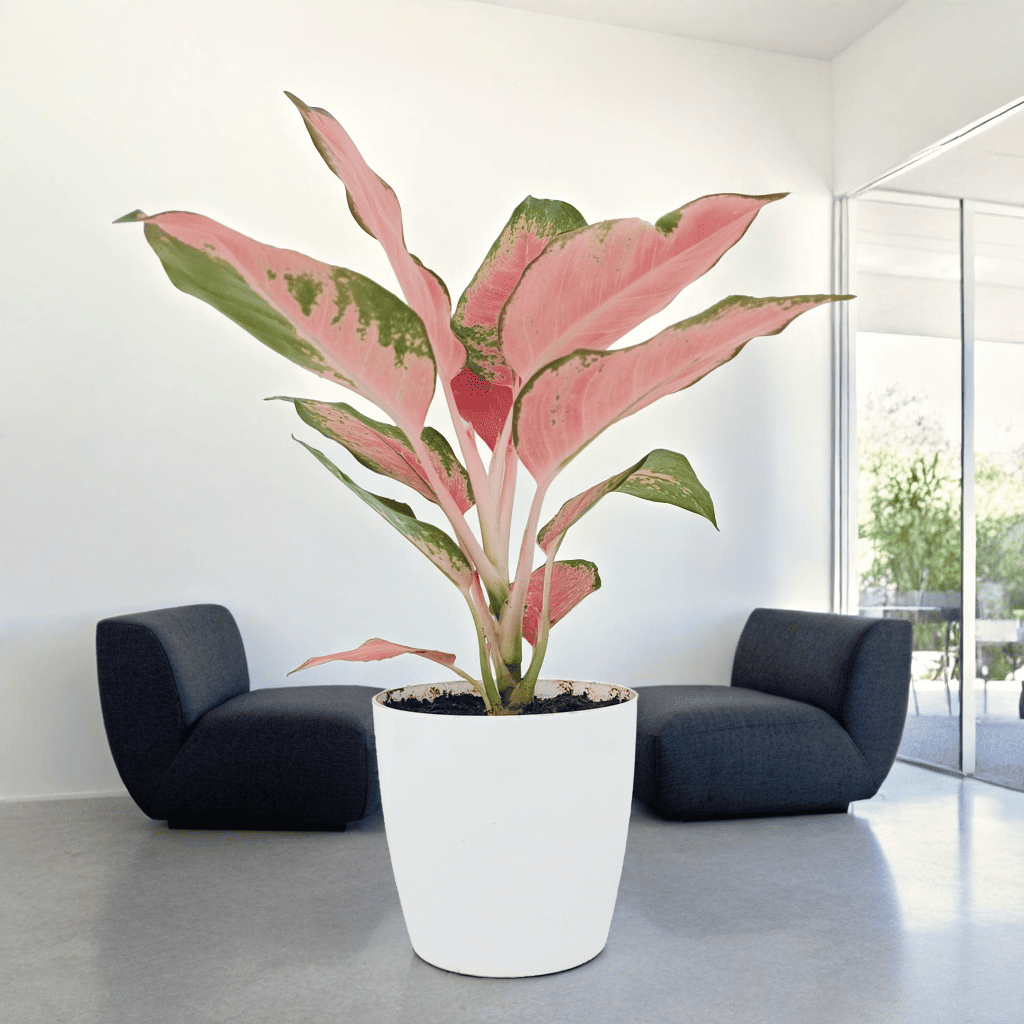Product Specifications
Meet the Aglaonema, the stylish yet low-maintenance plant! With its vibrant, patterned leaves, it adds flair to any room without fuss. Thriving in low to medium light, it's like the laid-back friend who always looks good. Aglaonema is an air-purifying pro and super forgiving if you miss a watering or two. It is native to Mexico.
1. Visual Drama: With its colorful and patterned leaves, the Aglaonema is a showstopper. It’s like having a living piece of art that brings instant pizzazz to any room.
2. Easy to Care For: Despite its glamorous appearance, the Aglaonema is surprisingly low-maintenance. It’s like having a celebrity guest who doesn’t demand a rider filled with exotic fruits and Evian water.
3. Air Purification: This plant not only looks good but also works hard to clean the air. It’s like having a beautiful, green air purifier that silently removes toxins from your home.
4. Mood Enhancer: Surrounding yourself with lush, green plants can boost your mood and reduce stress. The Aglaonema’s vibrant foliage is like a daily dose of happiness and tranquility.
1. Light: Aglaonemas are not fussy about their lighting – they can thrive in low to bright indirect light. Think of them as the adaptable performers of the plant world. Too much direct sun, and they’ll act like a diva caught without sunglasses – a bit burnt out. If they start to look a bit drab, they might be asking for a brighter spot.
2. Water: Water your Aglaonema regularly but let the top inch of soil dry out between waterings. Picture it as enjoying a nice drink but not wanting to swim. If the leaves start to droop, it’s giving you the plant equivalent of “I’m thirsty!” But too much water and it’ll throw a tantrum with yellow leaves.
3. Temperature: This plant likes it warm and cozy, much like it’s prepping for a night out. Keep temperatures between 65-75°F (18-24°C). If you feel like wearing a scarf, your Aglaonema probably needs a bit more warmth too.
4. Humidity: Aglaonemas enjoy a bit of humidity, but they’re not too demanding. If you want to spoil your diva, give it an occasional misting or place it near a humidifier. It’s like giving it a refreshing facial spritz.
5. Soil: Use well-draining soil to keep your Aglaonema comfortable. Think of it as providing a plush red carpet for its roots. A standard potting mix with some added perlite or sand will do the trick.
6. Fertilizer: Feed your plant with a balanced, water-soluble fertilizer once a month during the growing season. It’s like giving your Aglaonema its daily vitamins – it’ll keep those leaves looking vibrant and healthy.
7. Pruning: Trim away any yellow or damaged leaves to keep your plant looking its best. It’s like giving it a quick makeover – snip, snip, and it’s ready to dazzle.
Ques 1: Can Aglaonema survive in air-conditioned environments?
Answer: Yes, Aglaonema can adapt to air-conditioned spaces but prefers temperatures between 18–26°C. Avoid placing it near cold drafts or direct airflow.
Ques 2: Why are the leaves of my Aglaonema turning yellow?
Answer: Yellow leaves can result from overwatering, underwatering, or low light. Check the watering schedule and ensure proper lighting.
Ques 3: How do I propagate an Aglaonema?
Answer: Aglaonema can be propagated through stem cuttings or by dividing the plant during repotting. Ensure the soil remains moist for successful propagation.
Ques 4: Does Aglaonema purify indoor air?
Answer: Yes, Aglaonema is known for its air-purifying qualities, removing toxins like benzene and formaldehyde from the air.
Ques 5: How often should I fertilize my Aglaonema?
Answer: Fertilize once a month during the growing season (spring and summer) with a balanced houseplant fertilizer.
Ques 6: Can I place my Aglaonema outdoors?
Answer: Yes, but only in a shaded or semi-shaded area. Direct sunlight can scorch the leaves.






